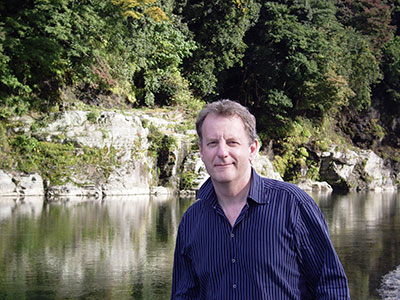 Nominated by Nick Sireau, SolarAid |
Jeremy Leggett
Jeremy Leggett is a scientist turned environmental activist turned entrepreneur. He was once a lecturer in earth sciences at the Royal School of Mines at the Imperial College of Science, Technology and Medicine in Kensington, an elite training house for oil and mining executives. In the mid-1980s he read warnings in the scientific journals about the risks to the earth’s climate caused by burning too much fossil fuels. He resigned in 1989 to join Greenpeace as the environmental group’s chief scientist. He left Greenpeace in 1996 and then the following year set up Solarcentury, which became a commercial company in 2000 and is now the UK’s largest solar company. In 2006, with 5% of Solarcentury’s operating profit, he set up SolarAid, the UK’s first and only non-profit organization that brings solar power to developing countries. SolarAid is totally independent from Solarcentury and now works in four East African countries, training solar entrepreneurs to build and sell solar lanterns, solar radios and solar chargers for mobile phones. It also installs solar systems on schools, medical clinics and community centres. Jeremy is a born entrepreneur with a burning desire to make a difference to the fights against climate change and global poverty. He set up Solarcentury with the express desire of making a big difference in the battle against climate change and from day one wrote into its constitution that when it made profit it would give 5% to set up a totally independent charity with no commercial strings attached. Jeremy has recruited a world-class board of trustees for SolarAid made up of social and business entrepreneurs with a deep commitment to fighting poverty and climate change. After two years of operation, SolarAid has raised $7m for its project work in East Africa. Solarcentury’s solar roof tile, the C21 looks virtually indistinguishable from normal grey roof tiles. It was developed specifically for the UK housing market and has won a number of awards. In Africa, SolarAid has developed a self-assembly solar lantern that allows local entrepreneurs to assemble the lantern from components supplied by SolarAid. This means that value is added locally and that repairs can also be done locally. SolarAid has also developed a kerosene lamp conversion kit that allows its entrepreneurs to convert kerosene lamps – used across Africa and a serious health risk – into solar lamps. SolarAid has already trained 100 entrepreneurs in microsolar and micro enterprise skills: how to build solar lanterns and solar radios, how to plan a business, and how to carry out marketing and sales. SolarAid believes in carrying out sustainable projects that will continue once the organization has pulled out of the country, hence the micro enterprise approach. One of SolarAid’s entrepreneurs in Kenya, who started from nothing in the Kibera slum, now has a solar company with 70 staff and has built and sold 7,000 microsolar products. One of its partners in Tanzania, which works with the deaf and disabled, is now making a profit from building and selling microsolar panels, earning much needed income for its beneficiaries. In the next four years, SolarAid aims to raise $24m and reach 1.5m people with solar power. This story is exceptional because it shows what one individual can do when he has the commitment, the skills and the drive to accomplish his vision. It also shows the importance of teamwork as Jeremy has built strong teams at Solarcentury and at SolarAid, recruiting committed and experienced individuals. It’s a message of hope as it shows how an alternative future, one that uses clean, renewable power, can be made available to everyone. |
||||||||||
